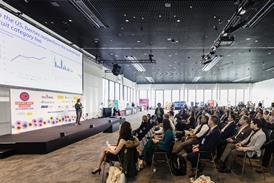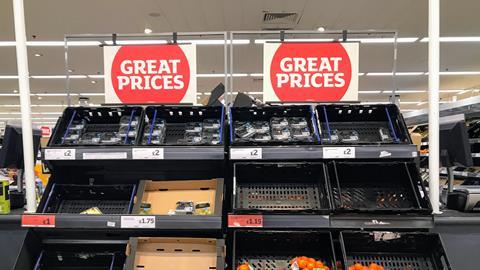New report suggests massive increase in production and operating costs over past three years has left around 60 per cent of supply unprofitable
Three-fifths of the fresh fruit and vegetables traded commercially around the globe are now sold at a loss or breakeven price, following an unprecedented increase in production and operating costs during the pandemic.
What’s more, those cost increases appear to have greatly reduced the amount of investment going into new projects, which means the effects of that inflation are likely to be felt for some time.
Those are two of the key findings published in a new report by the Global Coalition of Fresh Produce (GCFP), an international thinktank which brings together industry associations including Freshfel Europe, IFPA, CPMA, and Shaffe.
The report, which is based on the results of a survey conducted in early 2023, looked at the increasing cost of fruits and vegetable production around the world, as well as its impacts on the industry and consumers.
“We conducted this global survey to shed light on the challenges experienced by actors in the fresh produce supply chain worldwide,” says GCFP chair Ron Lemaire. “The narrative highlighted in this report will help the industry, its partners and all government levels understand the current impacts of the increase in production and operating costs, and work together to address them.”
Stark conclusions
The report states that producers of fresh fruits and vegetables around the world experienced “unprecedented increases” in production and operating costs during the Covid-19 pandemic, regardless of where in the world they operated. Those increases, the report says, were driven by costs of fertiliser (up 60 per cent worldwide), construction (+48 per cent), fuel and gas (+41 per cent), shipping rates (+40 per cent), and electricity (+40 percent).
Most operators were able to increase their selling prices, the report finds, with rises of 11 per cent in Europe, 13 per cent in Oceania and South America, 14 per cent in North America and 23 per cent in Africa.
However, these increases were “not enough” to compensate for the rise in production and operating costs, the coalition discovered, leaving nearly three-fifths of the global industry “selling at a loss or breaking even”.
Higher costs have also affected strategic and operational choices, it notes: “Certain producers have reduced their output, while some traders have reduced their export activities or switched to produce with lower shipping costs.”
Eighty percent of respondents noted that they had chosen to delay or cancel investment in their businesses, not only in capital and equipment but also in innovation and expansion. “This means that the impacts of the rise in costs will be felt for years to come,” the authors comment.
The final report is available on the Global Coalition of Fresh Produce website.
The Global Coalition of Fresh Produce brings together fresh produce associations from around the world, based on their joint vision to “create resilient global value chains for fruits and vegetables that bring a myriad of economic, environmental and societal benefits”.
Current members are Afruibana, AEBE, Australian Fresh Produce Alliance, AusVeg, CPMA, Colead, Freshfel Europe, FVGC, IFPA, Shaffe, and United Fresh New Zealand.







